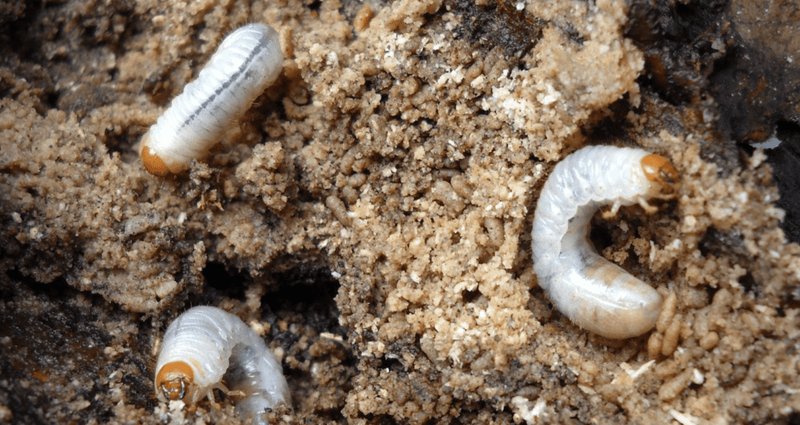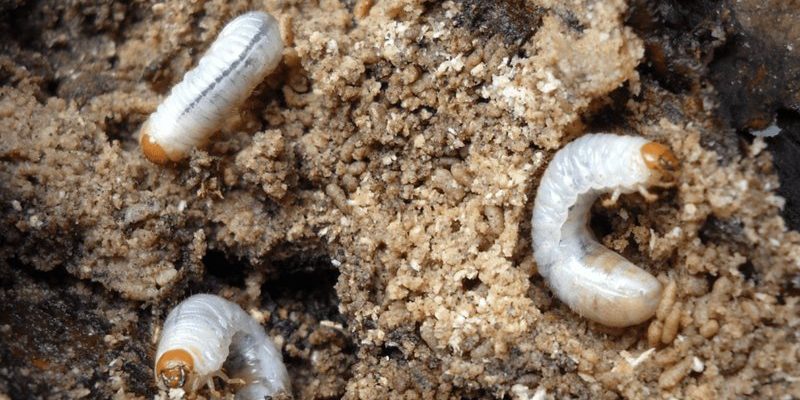
Think of your flower beds like a cozy cafe where the flowers are the patrons enjoying a meal. Grub worms are like uninvited guests sneaking in the back door, but are they really here to cause chaos? Or are they just looking for a meal themselves? To make sense of it all, we’ll explore what grub worms are, how they can affect your flowers, and what you can do if you find them in your garden.
What Are Grub Worms?
Grub worms are the larval stage of various beetles, including Japanese beetles and June bugs. These tiny, worm-like creatures typically have white bodies and a brown head, and they often curl up when disturbed. Honestly, they can look a bit creepy, but understanding their life cycle is key to figuring out their impact on your flowers.
In the spring and summer, adult beetles lay eggs in the soil. These hatch into grub worms, who then spend their time munching on organic matter, roots, and grass. While they don’t discriminate when it comes to food, flower roots can become a part of their diet. If you’ve noticed patches in your garden that look like they’re withering away, you might have a grub worm problem on your hands.
Here’s the thing—you should be aware of how many grubs are in your soil. A few grubs usually won’t cause significant harm, but when their numbers swell, they can start to impact your plants. The key is knowing when to act.
How Grub Worms Affect Flower Beds
If you’re wondering whether grub worms are harmful to your cherished flower beds, the answer isn’t black and white. In moderation, they can be harmless. But when their population grows, they can start affecting your flowers more than you might like.
First, let’s talk about the damage they can cause. Grub worms primarily feed on the roots of plants, which is a big deal for flowers. When they munch on these roots, they can weaken the plants, resulting in wilting, yellowing leaves, or even death if the infestation is severe enough. It’s similar to trying to grow a plant without giving it enough nutrition; eventually, it will suffer.
Additionally, if grubs are present in large numbers, they can attract other pests. Birds and other animals might notice the grubs and start digging in your flower beds, thinking they’ve hit the jackpot. This can lead to more damage to your plants, creating a double whammy of trouble.
Signs of Grub Worm Infestation
You might be wondering how to tell if those little white curls are becoming a problem. Well, there are a few signs to look for that can help you identify a grub worm infestation.
- Brown Patches: If you notice areas in your garden where grass or flowers are turning brown or dying, check for grubs. This discoloration can be a sign of root damage.
- Wilting Plants: Flowers that seem to be drooping or wilting, even after watering, may be suffering from root loss due to grub feeding.
- Digging Birds: If you see more birds hopping around your flower beds, they could be digging for grubs. This could be a signal that your soil is teeming with the little guys.
If you spot any of these signs, it might be time to take action. Early detection can save your plants from serious damage.
How to Control Grub Worms
Now that you know what to look for and the potential harm grub worms can cause, you might be asking, “What can I do about them?” Luckily, there are several effective methods for controlling grub populations without sacrificing the health of your flower beds.
First and foremost, consider your options for natural pest control. Beneficial nematodes are tiny worms that can be introduced to your soil. These nematodes seek out grub worms and feed on them, helping keep their numbers in check. This method is safe for your plants and the environment.
Another option is to apply insecticides specifically formulated for grub control. Make sure to follow the instructions carefully and choose products that are safe for your flowers. You don’t want to end up with a quick fix that harms your blooms instead.
Lastly, maintaining a healthy garden can deter grub worms. Healthy soil, adequate watering, and proper fertilization strengthen your flowers, making them less susceptible to grub damage. Think of it like giving your plants a strong defense—they’ll be better equipped to handle pests when they’re thriving.
Preventing Grub Worm Issues
You might be wondering how to keep grub worms at bay in the first place. Prevention is often easier than dealing with an infestation, so here are some strategies to consider.
Start with healthy practices in your garden. **Regularly aerating your soil** helps promote strong roots. When the earth is compacted, it creates a perfect environment for grubs to thrive. Aeration helps your flowers grow stronger roots, which makes it tougher for grubs to cause damage.
Another preventive measure is **crop rotation**. By regularly changing where you plant your flowers, you disrupt the life cycle of the grubs and make it harder for them to establish themselves. This method can greatly reduce their presence over time.
Lastly, **encourage natural predators**. Birds, beneficial insects, and even some mammals can help keep grub populations under control. By creating a balanced ecosystem, you’ll find that nature often does a great job of managing pests for you.
When to Seek Professional Help
Sometimes, despite our best efforts, grub worm infestations can spiral out of control. If you’ve tried everything and your flower beds are still suffering, it might be time to call in the professionals. Lawn care services often have access to stronger treatments and can assess the situation more thoroughly.
A professional can provide targeted treatments while ensuring that your flowers remain healthy. Plus, they can offer advice on preventing future infestations, giving you peace of mind to enjoy your beautiful blooms without the worry of grub worms.
Grub worms can certainly be a concern for your flower beds, but with the right knowledge and tools, you can manage them effectively. By keeping an eye out for signs of infestation, taking steps to control their population, and preventing future outbreaks, you’ll be well on your way to maintaining a vibrant garden.
Remember, gardens thrive on balance. While grub worms might be a nuisance, understanding their role in the ecosystem can help you find solutions that protect your plants without turning your garden into a battleground. A little effort goes a long way in preserving the beauty of your flower beds, and soon enough, you might find that those uninvited guests aren’t as harmful as you thought. Happy gardening!

